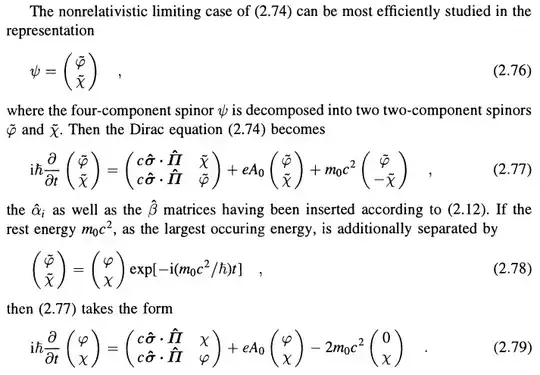About the rest energy: That's just a definition. They define $\varphi$ as $\frac{\widetilde{\varphi}}{e^{-i (m c^2/\hbar) t}}$ and analogously $\chi$. Since in the case of H not being explicitely time-dependent the general solution of the Dirac equation is a linear combination of eigenstates multiplied with $e^{-i E t/\hbar}$, $\varphi$ only changes in time with E - mc^2 (as opposed to $\widetilde{\varphi}$ changing in time with all of E, the same is true for $\chi$), they have "seperated" the rest energy.
About the last equation: If you use $\varphi = \phi \cdot e^{...}$ and the product rule, the left hand site of (2.77) gets an extra term of $m c^2 \cdot (\begin{array}{c} \varphi \\ \chi \end{array}) \cdot e^{...}$ (the other term is just $i \hbar (\frac {\partial}{\partial t} (\begin{array}{c} \varphi \\ \chi \end{array})) \cdot e^{...}$), so if you subtract that second term on both sides and after that divide everything by $e^{...}$ (which you are allowed to since that's never zero), you get exactly equation (2.79).
